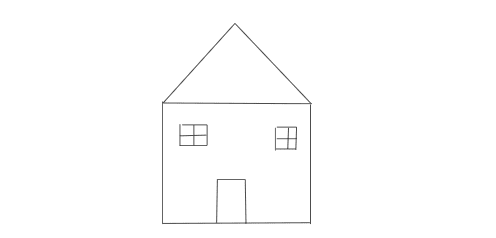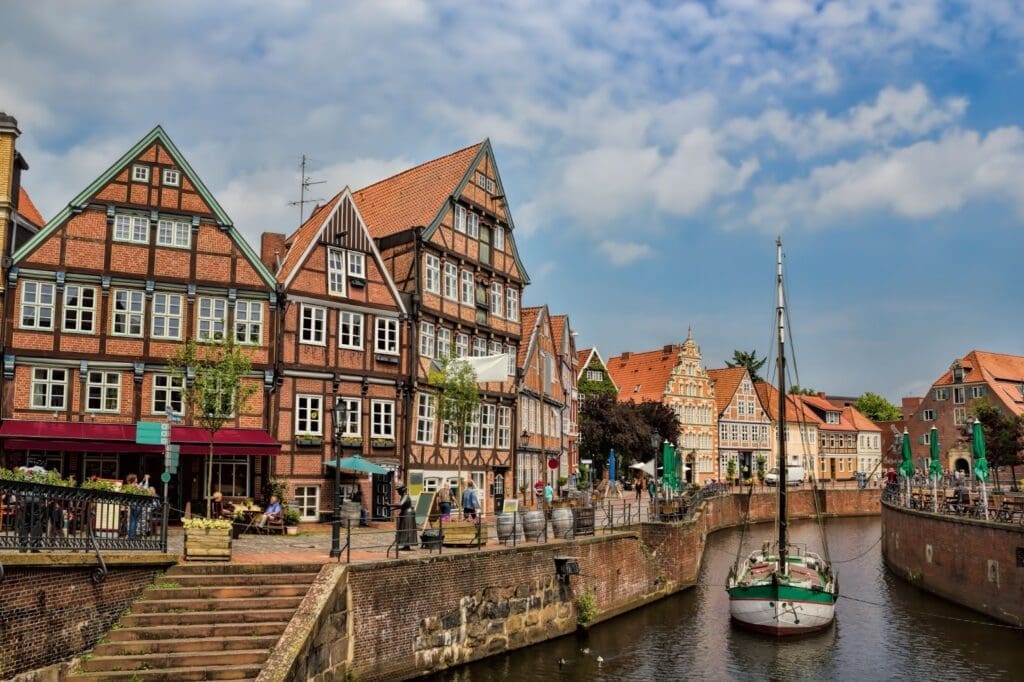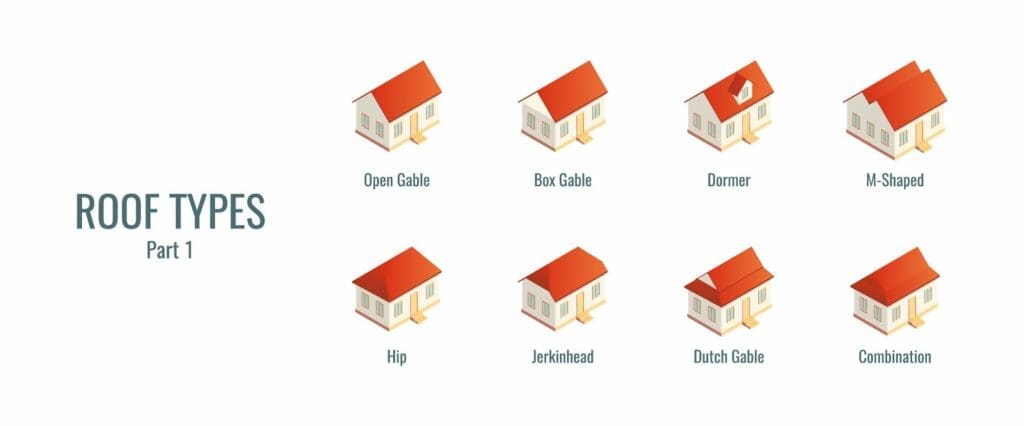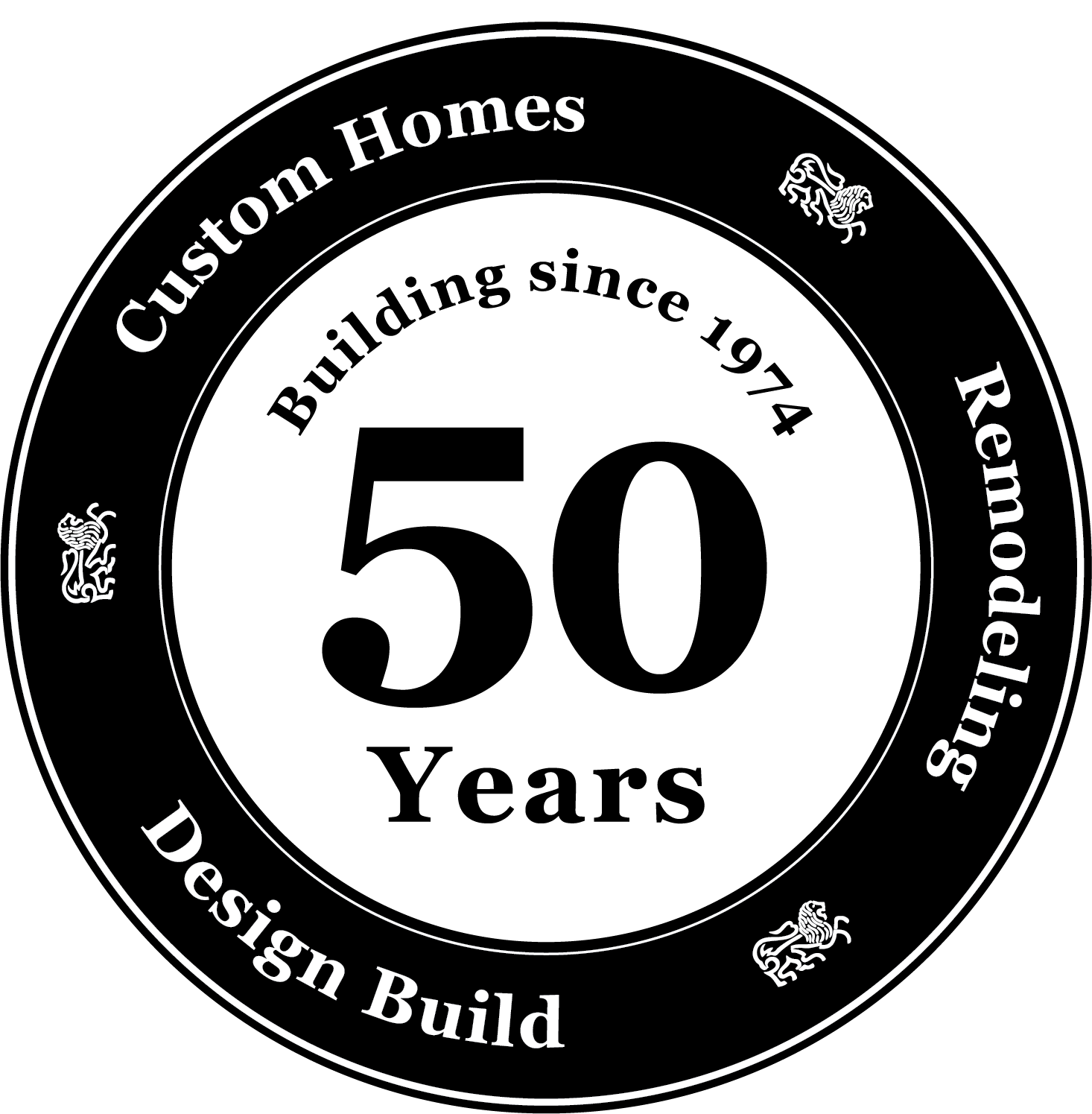If you were asked to draw a quick picture of a basic house, chances are it would look something like the image below, which is a house built with a gable roof.

These two sloping sides of the roof that meet in the middle are called gable or gabled roofs. They have quickly become one of the most popular types of roofs in houses built in the United States. The affordability, ease of build, and water drainage abilities make it an ideal roof for a new home, especially in regions with lots of rain and snow. These gables are typically made with the materials that make up a home’s exterior and can be built in various styles. So what are the origins of gable roofs, and what variations exist?
The Origin of a Gable Roof
Gable roofs were designed for temples built in Ancient Greece. Over time, they became more widespread in Germany, with front-gabled buildings and homes during the Gothic Period. “Front-gabled” simply means that the gable on the front of the home is the one that faces the street.

During the Renaissance period between the 14th and 17th centuries, gabled roofs became greatly influenced by Italian Architecture. As time passed, the popularity of front and side-gabled homes has fluctuated, with front-gabled returning to popularity in the 1920s upon its arrival in America.

Materials Often Used
There are a variety of materials that can be used to craft a gable roof. Standard roofing materials such as asphalt shingles, metal sheets, clay and concrete tiles, and cedar shake are common materials, each with unique characteristics. While asphalt, metal, and tile are more weather resistant, cedar shake is the most leak-proof of all the materials. The choice ultimately comes down to what material best compliments your home and the elements where you’re located. Gable roofs are not ideal for areas prone to high winds and hurricanes.
Variations of a Gable Roof
As we mentioned previously, the peaked roof with a triangle-shaped gable is the first thing that comes to mind for someone picturing a gabled roof. However, this is only one variation of the many that exist. Similar to the way different materials have their advantages, based on your home type, there may be a gable roof variation that better fits your needs. Some of these variations include:
- Open Gable
- Box Gable
- Dormer
- M-Shaped
- Hip
- Jerkinhead
- Dutch Gable
- Combination

While other variations exist, these are some of the most common examples you will find if you were to drive around and look at homes. It graphic above helps you visualize them and possibly recall homes you’ve seen in person that utilized these designs.
To Sum Things up
Ultimately, it’s up to you and your team of building professionals (like us) to decide if a gable roof is the right fit for your home. While they offer plenty of advantages to homeowners due to the simpler application, snow and rain resistance, and lower cost, we can also offer advice on any type of roof design that may have piqued your interest.
At P.L. Lyons, we have experts who can offer you advice on any decisions you may be hesitant about when it comes to building a beautiful home that will last. You can see our portfolio and take a look at many of the gable roof homes we’ve worked on in the past.
If you’re interested in more content like this, watch this video about trusses, which is our preferred structure of wood or steel designed in a specific way to support the roof.

